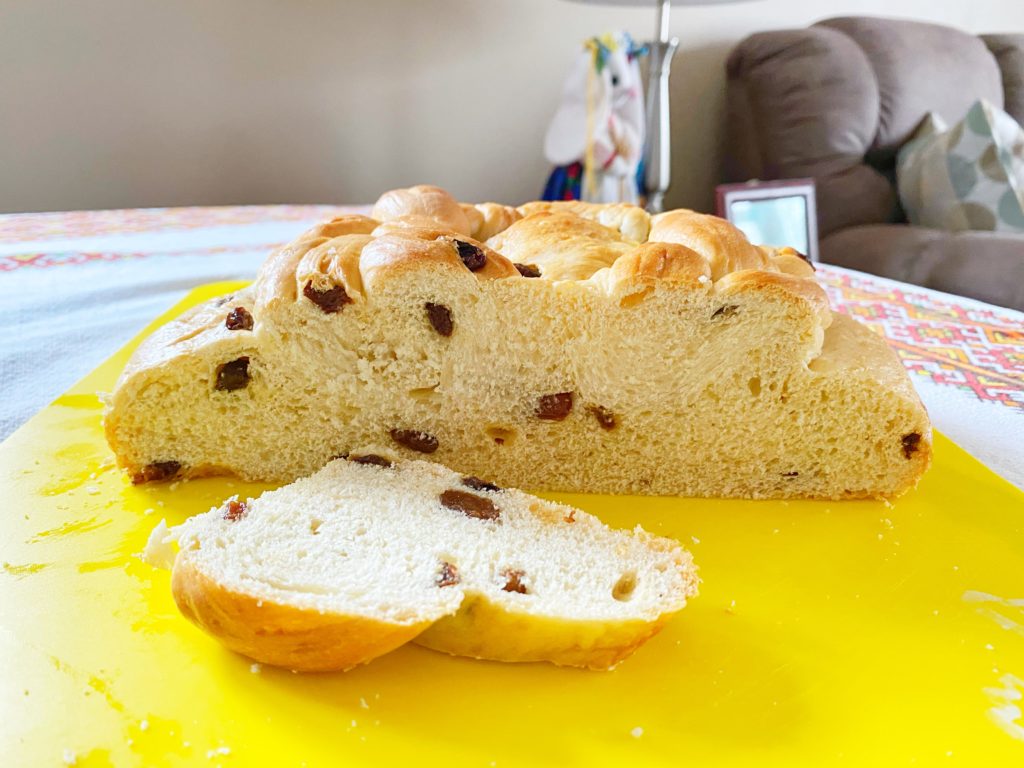
The one Ukrainian dish that my family never had an actual recipe for was Paska. This glorious Easter treat was often just purchased from our local bakery or store. Because of this, I always just assumed it was super difficult to make and my Grandmother’s and Claudia thought it wasn’t worth the work.
Since COVID-19 quarantine has given me a lot more time to spend challenging my baking skills, and I’ve received a lot of email requests for a recipe, I decided to give this traditional bread a whirl. I am so glad I did. I combined 3 different recipes I found in old rural Manitoba cookbooks and online to create the one I am featuring here. I was actually very surprised at how different each Paska recipe is. Different techniques, ingredients, and baking vessels.
I unfortunately didn’t take many step-by-step photos, as I didn’t know how this recipe would turn out. But in the essence of time and before I forget what I did to create this delicious bread, I am writing it here and will add more photos in the near future.
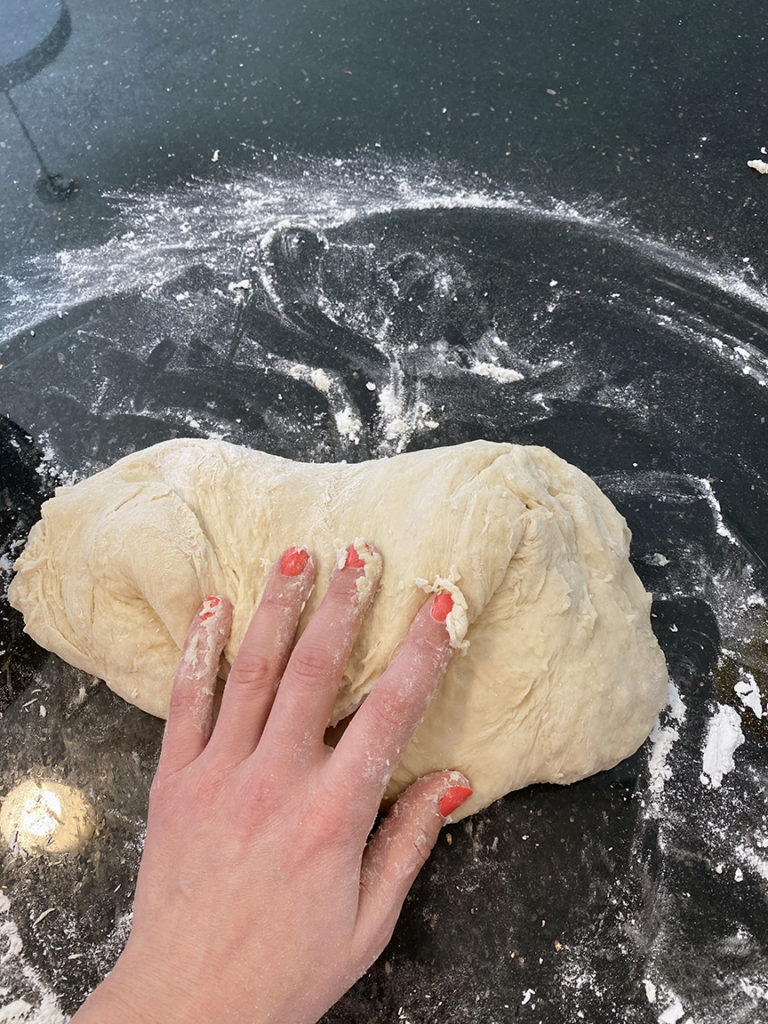
This dough is pretty easy to work with. Ensure you knead it for a good 10 minutes until it becomes medium-soft. Consider it your workout for the day. You will feel pretty good about yourself afterward. I know I did.
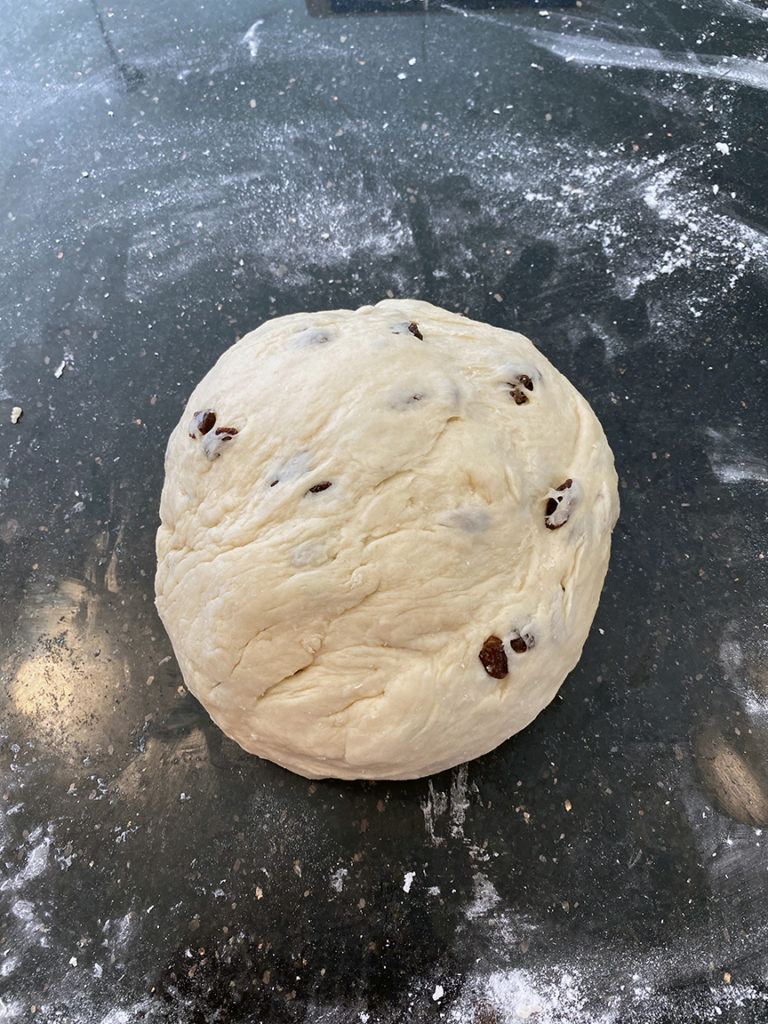
I added raisins to my Paska. The store-bought versions I grew up on always had them and I just prefer it. I am not sure if it’s traditional to have raisins or any other kind of fruit/flavourings, but this is my preference. I’d love to hear yours in the comments below this post!
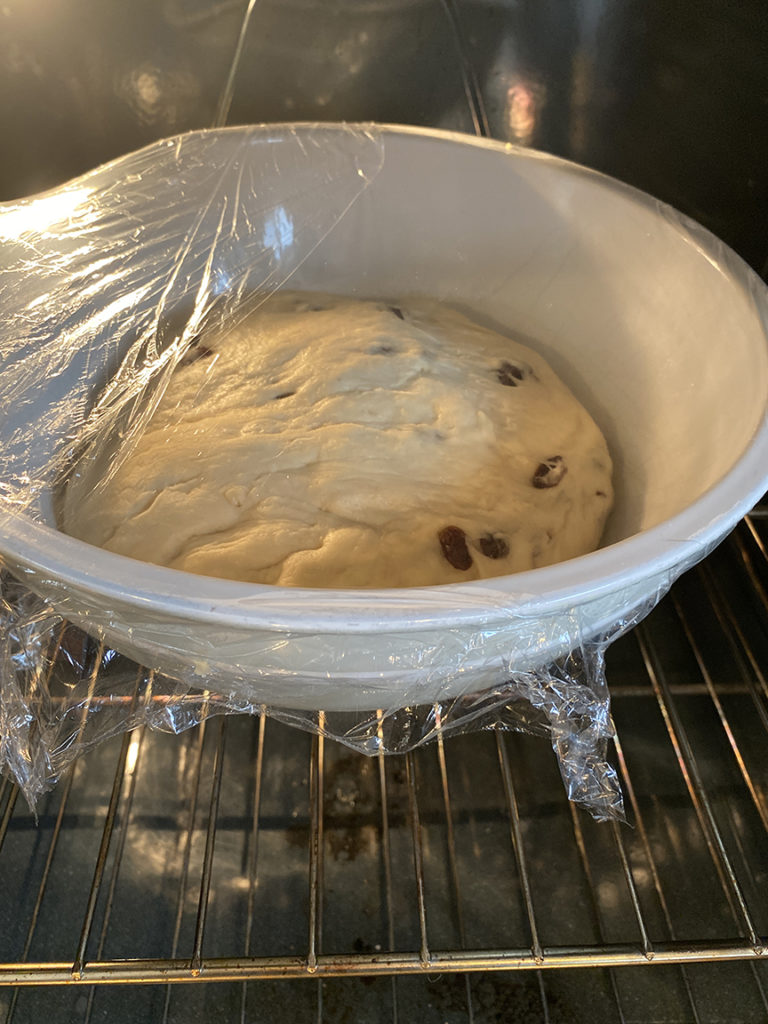
Like all dough, letting it rise in a warm place in your house is important. I actually turn on my oven for a few minutes on the lowest temperature, then turn it off before adding the bowl of dough.
This dough requires a couple of rises. I don’t know about you, but I find punching it down only for it to rise up again is quite therapeutic. Cue ‘Survivor’ by Destiny’s Child.
This recipe also makes two loaves of bread, so divide the dough in half once it’s done its second rise. If you want to get fancy and add some decorative braids or designs, divide it into 3. Divide the third dough ball in half and use that for your decoration portion for both loaves of bread.
Once your dough is divided into your pans, cover them with towels and let it rise again to double in size. If you divided your dough into three for decoration, wrap the third dough ball in some plastic wrap until you are ready to decorate.
I recommend using a 9-inch springform pan. I only had one, so I opted to use a 10-inch springform pan for the second loaf. It turned out great but obviously spread out more and didn’t rise as high.
Once your dough has risen, add your decorative elements and brush with an egg wash.
Bake in a 350F degree oven for 35-40 minutes, until golden brown.
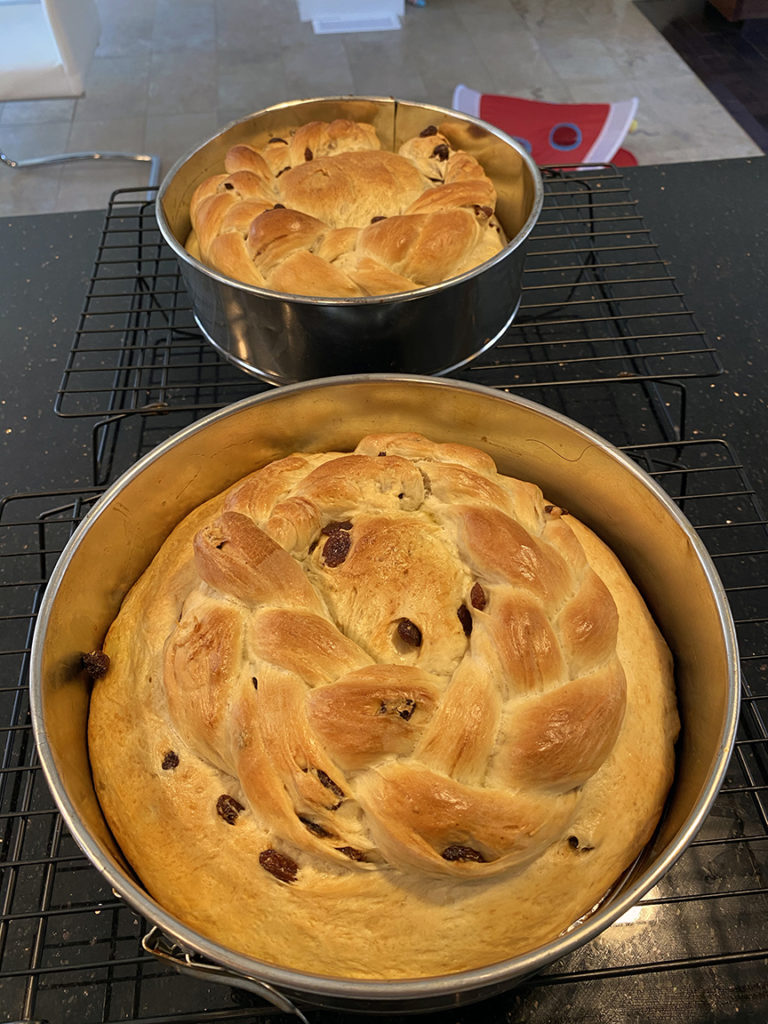
As you can see, I tried to get fancy with a braid ring on both Paskas. I am definitely not an artist.
Allow Paska to cool for 10 minutes in the pan, then remove to cool completely on wire racks.
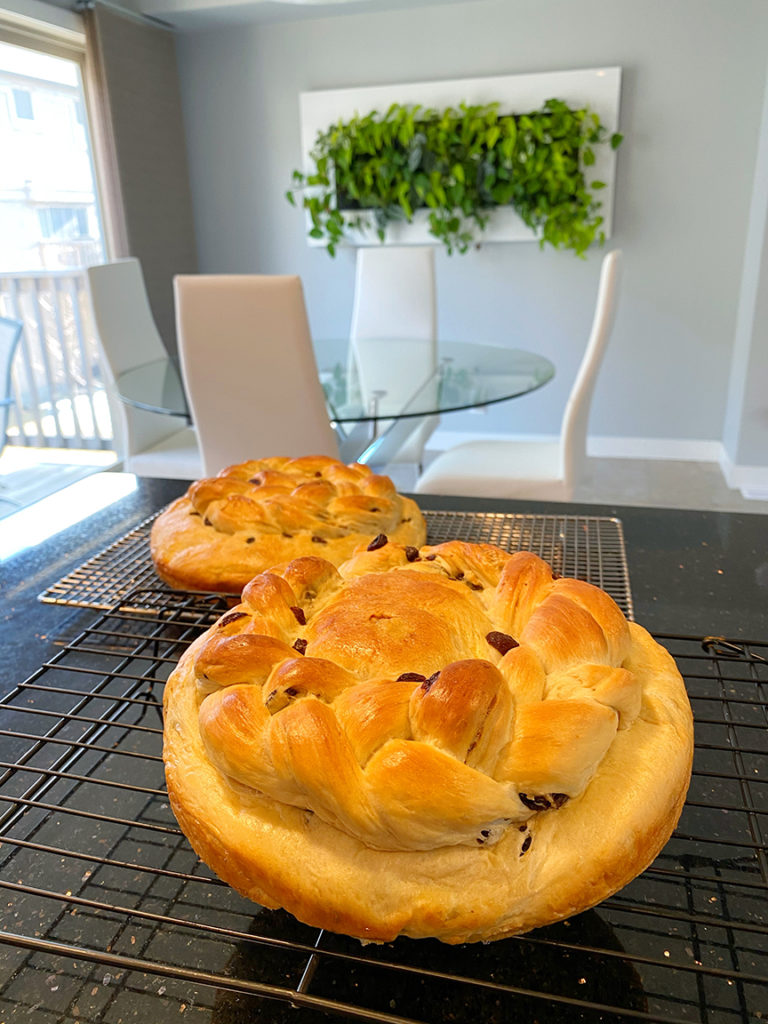
You can play around with the size of pans or dough portions for a higher rise. Honestly, with this being my first go at it, I was really happy with the size of the Paska here. And, in the end, it tasted amazing. That’s all that truly matters.
Paska
2
Loaves3
hours35
minutesThis traditional Ukrainian bread is dense with a hint of sweetness. Perfect for Easter or any day of the week.
Ingredients
1 tbsp yeast
1 cup warm water
2/3 cup sugar, plus 1 tsp for yeast mixture
1/4 cup, plus 1 tbsp unsalted butter, melted
1 cup whole milk, scaled and cooled
1 tsp salt
3 eggs: 2 well-beaten for your dough, 1 egg beaten and combined with 2 tbsp of water for brushing
1 tsp vanilla
6-7 cups all-purpose flour
1.5 cups raisins
Directions
- In a large bowl, dissolve 1 tsp sugar in warm water. Add yeast. Stir and let sit for 10 minutes until the mixture is foamy.
- To the dissolved yeast mixture, add milk, butter, salt, remaining sugar, 2 beaten eggs, and vanilla. Mix well.
- Add two cups of flour to the liquid, mixing well. Continue to add flour 1 cup at a time. When the dough is difficult to stir, do not add any more flour.
- Knead dough in the bowl to collect all the flour.
- Turn dough onto a floured surface and add your raisins. Continue to knead until dough is medium soft, about 10 minutes.
- Please dough in a greased bowl. Cover with plastic wrap and let rise in a warm place until doubled in size (about 1 hour).
- Punch dough down and let it rise again until double in size.
- Divide dough into two. If you want to make decorative braids, divide dough into three. If you are dividing into three, wrap one dough ball in plastic wrap and set aside.
- Shape remaining two parts into round balls and placed into greased 9-inch round pans (I use springform pans).
- Cover pans with towels and let rise in a warm place until dough reaches the top of the pans.
- If you reserved dough for decorations, divide it into two and use to create braids or any other decorations for your two loaves. I made two braids and circled them on top of the two loaves.
- Brush loaves with your egg wash.
- Bake in a 350F oven for 35-40 minutes, until your Paska is deep golden brown. If you find its browning too quickly, you can throw on some aluminum foil on top.
- Remove pans from oven and allow to cool for 10 minutes. Remove Paska from tins and allow to cool completely in wire racks.
- Enjoy!

rosemary merrill
April 19, 2020 at 6:35 PM (4 years ago)I did the same thing….combined several family recipes and the result was delicious. Can’t wait to try your recipe! thank you.
Elaine
October 25, 2020 at 3:07 PM (4 years ago)I’m sorry, but it looks more like challah bread and not a Paska . Paska should be tall and cylindrical in shape .
Claudia's Cookbook
March 1, 2021 at 3:20 PM (3 years ago)To each their own. Still tastes great 🙂
Tim
December 6, 2020 at 12:43 PM (3 years ago)Hi, I found your blog a few years ago when I was away from home and looking for a Pyrizhky recipe (as the old card with my aunt’s recipe was at home). Your pyrizhky recipe is now my goto. I like looking at the variations on some of the recipes we grew up with that you post or people comment on.
From my Baba’s Paska recipe, we use golden raisins. You put them in a colander and run hot water over them until they are soft, then pat them dry with some paper towel. This makes them melt into the texture of the bread once it’s cooked.
Also, while the traditional Paska shape is a tall circular loaf, we tend to just make a bunch of smaller bread shaped loaves using the small disposable bread pans. Not necessarily traditional, but convenient, and it’s still delicious.
Thanks for spreading the Ukrainian traditions! It’s hard to track down sometime since we’ve moved away from Manitoba. Cheers
Claudia's Cookbook
March 1, 2021 at 3:17 PM (3 years ago)Thank you so much, Tim!
Kathleen
April 6, 2023 at 11:30 AM (1 year ago)I’ve been looking for a good paska recipe and I’m happy to say this is it! I made one batch as written and one without vanilla and a little less sugar. The dough is easy to work with (I used my mixer), the texture is perfect to put into the toaster. Thank you for the suggestion of using a springform pan. They came out so easily unlike my last attempt.
Kelly
February 24, 2024 at 9:03 AM (2 months ago)I’m eager to try this, but I’m thrown off by the ‘whole milk, scaled and cooled’ part of the recipe ingredients. Can you help me better understand? I’m not familiar with bread making, but I want to try this recipe for Easter